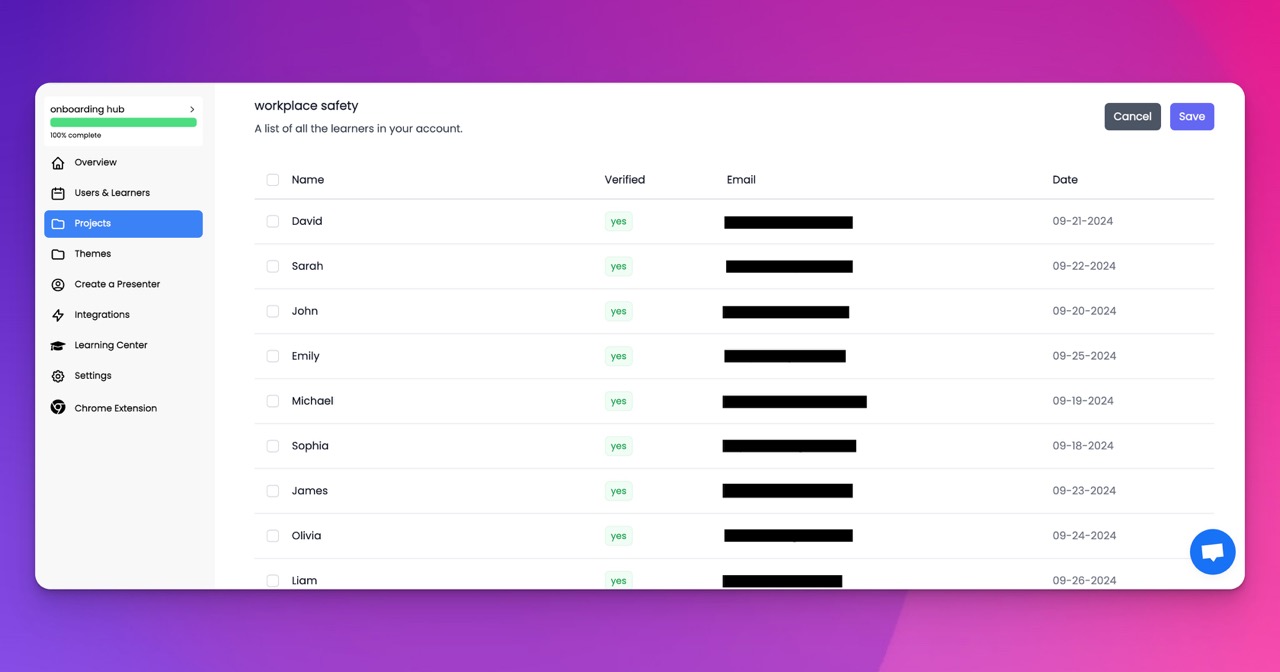🎉 Trainday now integrates with Zendesk and Hubspot 🎉 Trainday now integrates with Zendesk and Hubspot 🎉 Trainday now integrates with Zendesk and Hubspot
🎉 Trainday now integrates with Zendesk and Hubspot
Contact
Banking
Creating Employee Training Courses in Banking: A Comprehensive Guide
Creating Employee Training Courses in Banking: A Comprehensive Guide to Utilizing Data and Artificial Intelligence for Efficient Course Development
In the ever-evolving banking industry, employee training plays a crucial role in ensuring a knowledgeable and skilled workforce. However, traditional training methods can be time-consuming and fail to address the rapidly changing landscape of the sector. To tackle this challenge, incorporating data and artificial intelligence (AI) into training course development can revolutionize the way banks educate their employees. In this comprehensive guide, we will explore how data and AI can be leveraged to create relevant and efficient employee training courses in record time.
1. Understanding the Benefits of Data-Driven Training:
a. Enhanced Relevance: By analyzing vast amounts of data, banks can identify the most critical skills and knowledge that employees need to succeed in their roles.
b. Personalization: Data-driven insights enable tailoring training content to individual employees, ensuring they receive the most relevant information based on their strengths and weaknesses.
c. Real-time Adaptation: With access to real-time data, training courses can be continuously updated and tailored to reflect the latest industry trends and regulatory changes.
2. Leveraging AI for Efficient Course Development:
a. Content Generation: AI-powered algorithms can analyze vast amounts of data, such as industry reports and internal documents, to generate relevant and up-to-date training content.
b. Automated Assessment: AI algorithms can assess employees' progress and provide personalized feedback, reducing the need for manual evaluation.
c. Adaptive Learning Paths: AI can track employees' performance and dynamically adjust the training path to focus on areas where they need improvement, optimizing the learning experience.
3. Collecting and Analyzing Data for Course Development:
a. Identifying Key Metrics: Determine the key performance indicators (KPIs) necessary to measure the effectiveness of training programs.
b. Data Collection: Gather relevant data from various sources, including employee feedback, performance metrics, customer satisfaction surveys, and industry reports.
c. Data Analysis: Utilize data analytics tools to identify patterns, trends, and gaps in employee knowledge, enabling the creation of targeted training content.
4. Designing Engaging and Interactive Training Courses:
a. Gamification: Incorporate gamified elements into training courses, such as quizzes, challenges, and rewards, to increase engagement and knowledge retention.
b. Microlearning: Break down complex topics into bite-sized modules, accessible anytime and anywhere, to accommodate employees' busy schedules and improve knowledge retention.
c. Virtual Reality (VR) and Augmented Reality (AR): Utilize VR and AR technologies to simulate real-life scenarios, allowing employees to practice their skills in a safe and immersive environment.
5. Continuous Improvement and Evaluation:
a. Feedback Loop: Establish a feedback mechanism to gather input from employees, trainers, and stakeholders, ensuring continuous improvement of training courses.
b. Performance Tracking: Utilize data analytics to measure the impact of training programs on employee performance, identifying areas for further improvement.
c. Regular Updates: Continuously update training courses to align with industry changes, technological advancements, and evolving customer demands.
Conclusion:
By harnessing the power of data and AI, banks can create employee training courses that are both relevant and efficient, addressing the specific needs of their workforce in a rapidly changing industry. The adoption of data-driven insights and AI technologies allows for personalized, adaptive, and engaging learning experiences, resulting in a knowledgeable and skilled banking workforce. Embracing this comprehensive guide will enable banks to stay ahead of the curve and empower their employees to thrive in the ever-evolving banking landscape.
Accelerate Compliance.
Deliver OSHA-Ready Courses Instantly.
Empower your team with data-driven training solutions tailored to your industry's safety standards. Stay compliant, reduce risks, and boost productivity with AI-powered course creation.
